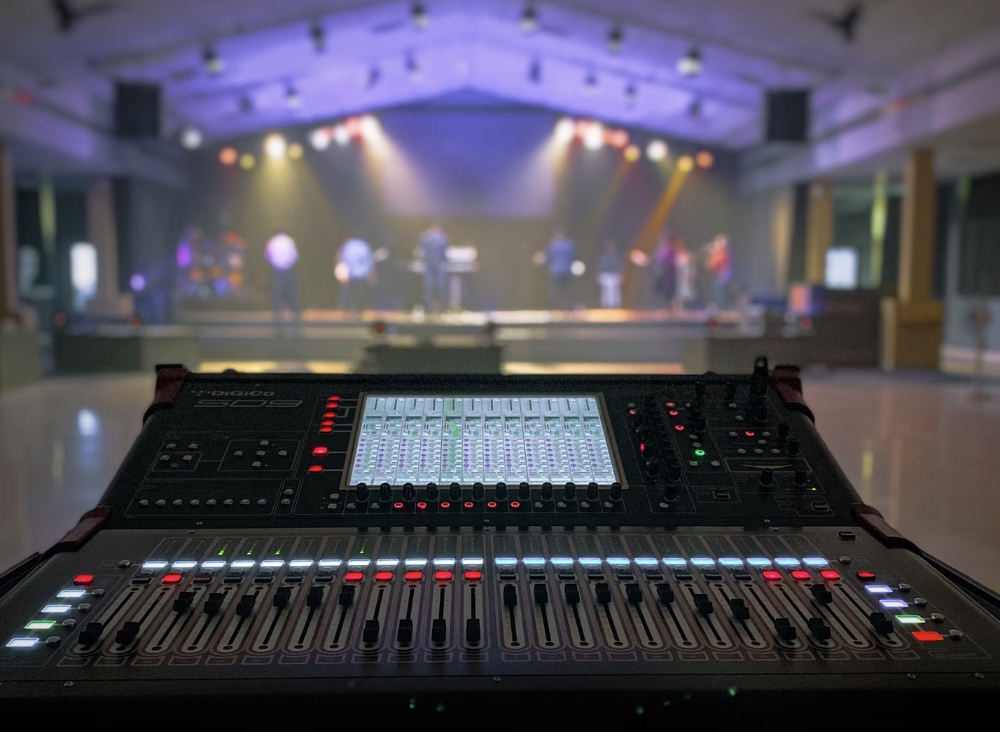One of my first jobs in the pro audio business was to make cables, do simple repairs and be a general “tech” at the USC film school audio department. I was one of those destitute students who asked around about “anything I could get” in terms of work. And this was it.
It was a good experience for a number of reasons, foremost of which was that THX guru Tomlinson Holman was one of the main teachers at the film school, and he was often around the department. I had taken a class from him and knew who he was.
One day at the shop, he was hanging around a bit and I decided to ask him about his thoughts on tube versus solid-state amplifiers, figuring that A) he knew a lot about the subject, and B) he would have some interesting insights for a budding engineer like myself. His answer surprised me but gave me something to chew on for many years after that. He said, “What you have to think about is the difference between ‘reproduction’ and ‘production’ in terms of what the two different designs accomplish.”
In terms of live sound, I think this same concept is very important to consider. It’s fairly common to debate the issue of “reinforcement versus amplification,” and this is close to what I’m getting at. So that these concepts can be more thoroughly examined, I would propose naming three different categories: reproduction, reinforcement, and production.
Reinforcement: The Most Basic Approach
Generally, most music begins with acoustic instruments of one form or another. Even the electric guitar is usually paired with an amplifier which is a very important component of the sound. And thus, the first goal of sound reinforcement is just that: to reinforce the existing acoustic sound so that A) a larger audience can hear the music – i.e., the sound is capable of filling a larger space, or B) that certain instruments can be brought up to the level of other instruments on the stage.
The second category is quite common when mixing drums or electric instruments with acoustic sources such as horns or strings. Of course most often, reinforcement is a combination of these two things: some amplification of quieter sources to balance the louder ones, and an overall boost to fill a larger space and project to a larger audience.
An additional thing to consider here is that not all audio frequencies propagate equally. Low frequency sounds generate standing waves and are difficult to absorb, while high frequencies are absorbed easily. Often, along with doing internal balancing between instruments, it is necessary to add or subtract certain frequencies from specific sounds so that the resulting impression is one of “natural-ness.”
For instance, you may want to add overhead mics to the drums just to bring out the upper harmonics from the cymbals and hi-hat, even though the drums are plenty loud on their own. In order for this to work, of course, you may want to cut everything in the overhead mics below about 400 Hz…
Reproduction Or Production?
This is where things get interesting. For certain types of music, reproduction is the goal of reinforcement. In other words, the FOH engineer is attempting to re-create the original event on a larger scale or in a different venue. Exactly what he or she is trying to re-create is an interesting question in itself. If the original event is purely acoustic music such as from an orchestra, an opera singer, chorus, or big band jazz group, then usually the goal is to do what was described in the paragraph on reinforcement. This includes some internal balancing with the addition of greater volume for a larger space. In other words, the original intent of the music is preserved.
A very different situation, but still reproduction in my opinion, is when the original event is a recording. In many cases, a touring act wants to present a live sound event that is similar to the recording in many ways. The same vocal effects, drum sounds, basic mix, etc. are all part of this approach. Often times, FOH engineers listen carefully to the recordings in order to glean these specifics so that there is a good starting point.
Where the live sound becomes production, in my view, is when the engineer makes choices that take the overall effect in a different direction than either the original acoustic event or the reference recording. The reasons for this approach are many, and include trying to achieve an effect, perhaps the original would be considered “dated” or just the fact that the artist wants to present something unique to the audience. Often this is accompanied with new arrangements or “extended” versions of songs. It may also coincide with other production effects such as lighting or pyro.
In fact, this reminds me of when I saw the Metallica tour in the late 1990s. Although the overall mix was reminiscent of their albums (I’m thinking of Master of Puppets, And Justice for All, and the “Black Album” specifically), there was a decidedly different element to the live mix that simply couldn’t be captured on the recordings. Some of that effect was just simply that it was friggin’ LOUD.
But in contrast to a lot of shows that I’ve seen that were loud, this one was very clear, punchy, and had the effect of transporting the audience to another planet: Metallica Planet. The lights, the pyro and the arrangements of the songs were specifically designed to accomplish this goal along with the mix done by “Big” Mic Hughes.
I’ve seen a lot of good shows over the years but this one sticks in my mind as being excellent. It didn’t hurt that Suicidal Tendencies was one of the opening acts… they rocked, too! My only disappointment was that Alice in Chains had just fallen apart and thus was replaced by Candlebox, who did not fill the admittedly large shoes very well. But I digress…
It’s All About Intent
To me, it all comes down to making decisions about how you will approach your craft of live sound, and it should be different depending on the various types of music and different audiences. If you are trying to create the illusion of Glenn Miller on stage for the blue hairs, well, I’d advise reproduction so that the audience hears what they expect to hear.
But for different audiences and different acts, it’s really up to the artist and up to you how to best approach this question. And it goes beyond mere mixing – it extends into the loudspeaker system design, what effects you might want to bring, and your selection and placement of microphones. Think holistically and realize that you are the key to what the audience ultimately hears. So what do you want them to hear?




















